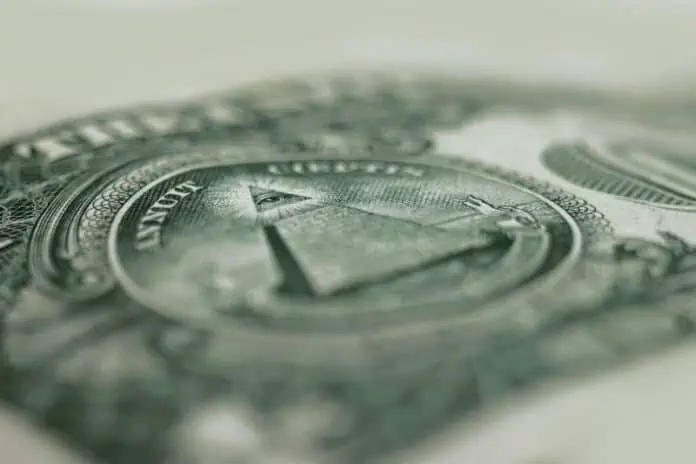
UST, Terra's algorithmic currency, became detached from the dollar and its algorithmic mechanism caused a series of problems that dragged down the entire ecosystem.
Last week, cryptocurrencies had one of the toughest weeks in living memory. Most cryptocurrencies had huge losses, however, if this fall had a protagonist, it was Terra, UST and Luna.
In less than a week, LUNA, which had positioned itself as one of the Top 10 Cryptocurrencies by Market Cap, fell 100% to a value of just a fraction of a cent, and UST, the algorithmic stablecoin designed to maintain its peg to the dollar, plummeted to 13 cents.
What happened to Terra and UST?
In the case of Terra, being a decentralized algorithmic currency, it was not backed 1 to 1 by the dollar. Therefore, a number of factors affected its value: the first was the Terra and UST mechanism itself, which caused a general panic among investors, who did not understand why the stablecoin was losing its parity with the dollar and therefore rushed to sell en masse. In this way, a spiral of death, which caused the price of UST to continue to drop and drag LUNA down with it.
Anchor Protocol: Too good to be true
One of the main use cases for $UST was lending on Anchor, which Initially they had an interest rate of up to 20%, but which began to decrease starting in March, when Proposition 20 came into effect. From that point on, the protocol's interest fell as Anchor's reserves decreased.
Proposition 20 stated that If Anchor's bookings increased by 5%, the interest rate also rose. However, if reserves fell by 5%, so did interest. At the same time, the rate was expected to fall continuously by 1,5 percentage points each month, as long as there were more lenders than borrowers.
In this sense, on April 23, more than 70% of all $UST in circulation were deposited in Anchor, which made it clear that the 20% interest rate was not going to last for long. For this reason, almost 6 million UST left Anchor over the weekend of May 8-3.
Since UST holders were only interested in the Terra network for the profit they got from Anchor, these outflows meant that Users completely lost interest in UST and, therefore, a series of mass exoduses were going to occur.
The minting mechanism of LUNA and UST
To exit $UST, users have two options. The first is Terra’s “burn and mint” mechanism. This mechanism allows holders to exchange 1 UST for 1 LUNA dollar, burning the UST in the processThis creates an arbitrage opportunity when UST breaks away from the dollar, as speculators can buy UST at a discount and exchange it for $1 worth of LUNA, making a slight profit.
The problem with Terra's burning and minting mechanism is that the massive outflows caused several problems. The first is that the supply of LUNA grew a lot in a very short time, which caused the price to plummet. In this way, Each UST that was burned caused a greater number of LUNA to be minted, causing the price to fall further and further..
Because of this process, there came a time when the price of LUNA was so low that it simply There was not enough liquidity on the network to pay for UST outflows.
Furthermore, this whole burning and minting process requires the use of validation nodes and payment of transactions. Therefore, at one point the network became so congested that most exchanges had to stop transactions with LUNA.
Finally, on May 13, the same Terra validators They paralyzed the network at block 7.607.789 to prevent possible attacks. Those responsible pointed out that mass minting had caused the price of LUNA to be so low ($0,00006 per unit at the time) that it opened up an opportunity for attacks.
The option to exchange UST on Curve Finance
On the other hand, the second option that users had to leave UST was go to the Curve Finance stablecoin exchangee. This exchange has pools with stablecoin pairs where users can deposit UST and withdraw their pair, in this case USDC. The problem was that everyone deposited large amounts of UST, so the pool became unbalanced.
Curve Finance offered Big discounts on UST arbitrations to try to balance its pool. However, this mechanism did not work, as no one wanted to buy the UST that continued to accumulate in ever larger quantities.
In fact, at one point A single user poured over 85 million UST into Curve and withdrew 84,5 million USDC from the pool. This led to further selling pressure, as Curve attempted to arbitrage, offering discounts to balance the pool.
Thus, what on Sunday was a small deviation of $0.002 in the link with the dollar, on Tuesday had become a drop of $0,32. At the same time, LUNA went from $60 to less than $30.
At that point, UST's market cap was on the verge of surpassing LUNA's, which would have meant that the latter would not be able to absorb the former, creating a death spiral.
Terra's Bitcoin sale
At that time, the Luna Foundation intervened, which poured approximately $216 million worth of other stablecoins into Curve Finance's pool to try to balance it and for UST to regain parity.
Then the deployment began. Bitcoin holdings that the foundation had been accumulating and offered to “professional market makers” to be spent when UST was below the peg, and vice versa when it regained the peg.
The move saw UST go from $0,64 to $0,93However, Curve's outflows ate up the bailout's liquidity, so they were unable to stop the bleeding. Furthermore, it is still unclear whether Bitcoin was actually used to maintain the peg.
Eventually, the price of LUNA continued to plummet as people dumped UST and simultaneously sold LUNA until its price was so low that it became impossible to cover the UST losses, resulting in an uncollectible amount of debt.
in a new attempt to save the network, Do Kwon released the LUNA minting mechanism, removing the limitations. Unfortunately, this move did not help the network either, but rather caused the opposite effect. On May 8, LUNA had a circulating supply of 343 million, by May 12, this had already exceeded 32.000 billion..
At this point, rumors began to appear on Twitter about alleged market manipulation by BlackRock and Citadel. The theory was that the firms could have requested a joint loan of 100.000 Bitcoins to purchase UST, causing the stablecoin to crash.
Trying to save UST and LUNA
Finally, the community presented several ideas to protect the network, such as the possibility of Burn all UST eliminating the need to mint more LUNA. Do Kwon appeared on Twitter to support another of the community's proposals, which sought to change the infamous burning and minting mechanism, for a traditional 1 to 1 backup system.
Over the next few days, some of the biggest names in the crypto sector appeared to try to offer solutions to the Terra problem. Binance CEO CZ offered several options to developers, but did not receive a response from TerraForm Labs. For its part, Vitalik Buterin, founder of Ethereum, commented that Terra should focus on refunding money to small holders.
Recently, Polygon (MATIC) has offered to the developers of Terra migrate to their network to continue working on their DAppsHowever, Do Kwon has asked the community and developers to continue supporting his ecosystem and has launched a new governance proposal on the Terra forum called “Terra Ecosystem Revival Plan 2”, with which he proposes making a fork that divides the blockchain in two.
[hubspot type=cta portal=20298209 id=38fb28e1-1dc1-40e3-9098-5704ca7fcb07]


